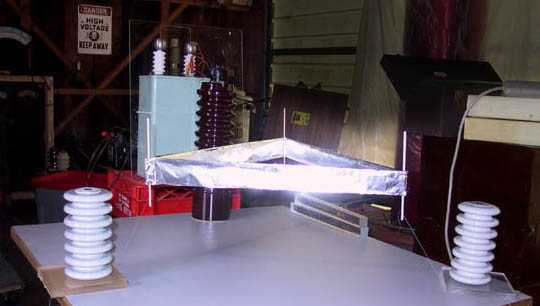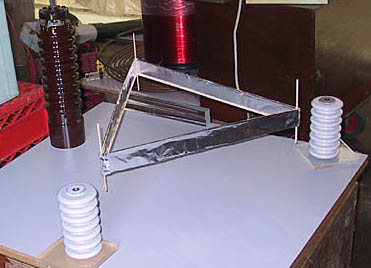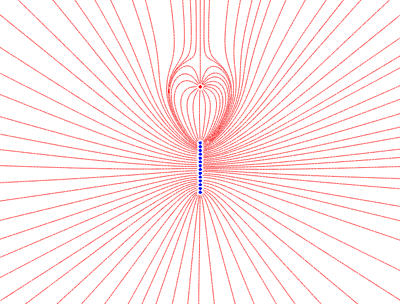|
High Voltage “Lifter”
Electrostatic lifters are fascinating devices that have become popular construction projects for experimenters all over the world. NASA’s recent patent on a type of lifter design has spurred further interest in these devices.
What is a lifter?The basic device merely consists of a lightweight (typically balsa wood) frame, to which is attached a wire and a sort of aluminum foil skirt. The photos on this page illustrate this. The wire is charged to approximately 30,000 volts by means of a power supply and very thin wire attached to the corona wire. The aluminum foil skirt is coneccted to ground by a thin wire as well. When the device is powered it developes downward thrust and levitates. 
How does it work?The device levitates by creating an electrostatic “wind”. This is caused as the thin positively charged corona wire ionizes the air surrounding it which is then repelled from the corona wire and pulled towards the negtively charged “skirt”. The force of this ion wind combined with the impact of the moving ions on the surrounding air creates an upward thrust. This is essentially how some of the “ionic breeze” air purifiers work that you may have seen in catalogs. A well known effect called dielectrophoresis may also contribute to the device’s thrust. This is an effect whereby dielectric material in an asymmetrc electric field becomes polarized and moves towards the larger electrode. In a fluid dielectric medium such as air or liquid, dielectrophoresis can cause a continuous flow of dieletric material from one electrode to another. The more intense the electric field the greater the effect. Dieletrophoresis is consitent with experiemental results shown by encapsulating the electrodes.
|

